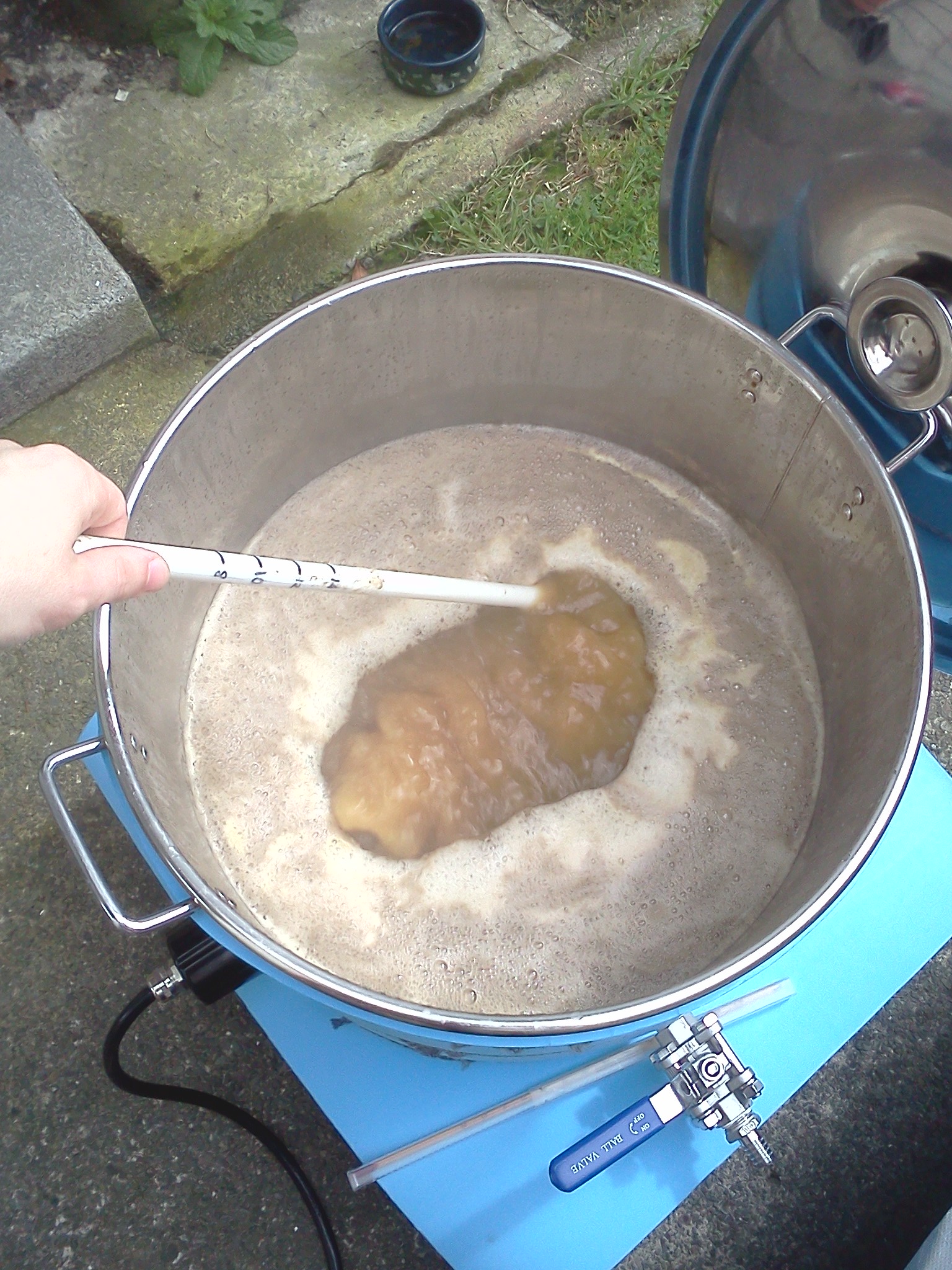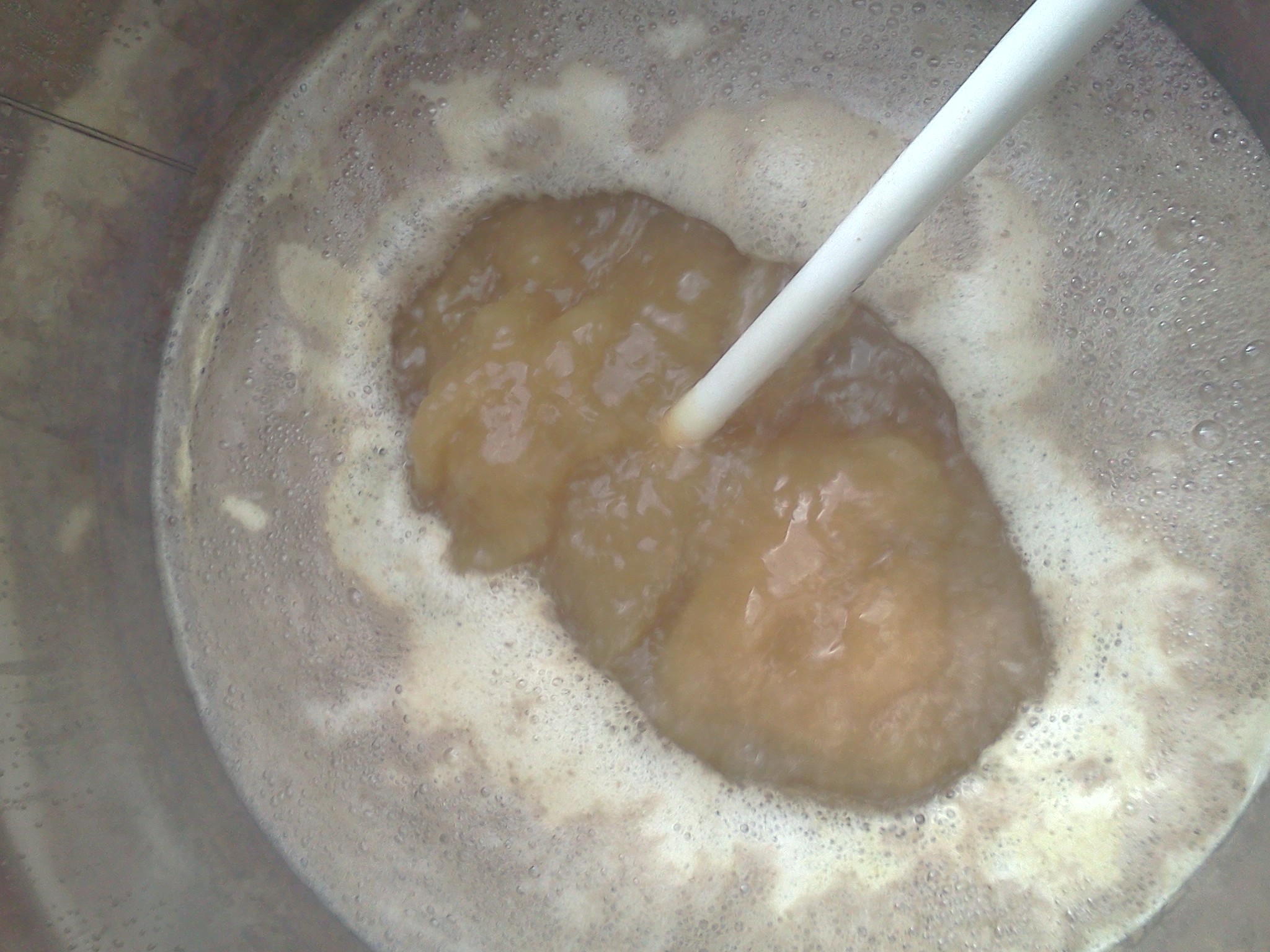2 kW Electric Brew Kettle
My all-grain batches used to be half-batches, weighing in around 9 litres. I was using an old aluminium preserving pan on top of the stove to brew. The bottom of the pot didn't make very good contact with the surface of the stove. I decided to build a kettle that uses an immersion element, as well as being larger in volume, allowing me to do full 19–23 litre batches.
In late 2015, I bought a cheap 304 stainless 30 litre stock pot from a local auction site, and a 3 kW immersion element designed for use in hot water cylinders. These sat for a while, waiting the customary period that things do when the to do list slips a little.
In mid 2016, I started getting back to finishing the simple system off, with the purchase of a 316 stainless 3-piece ball valve for draining the wort from the kettle. I had a local stainless engineering shop make the holes for the element and the ball valve since I don't have holesaws capable of biting stainless.
The rough cost run-down is as follows, in New Zealand pesos:
- Stock pot: $40
- Ball valve: $50
- 3 kW immersion element: $70
- Engineering: $20
- Mains plug: $5
- Overkill mains cabling (2.5 mm²): $10
- 1 metre of silicone tubing: $10 (optional)
- Bedroll for ghetto thermal insulation: cheap (optional)
The total damage is in the ballpark of NZD$200, which is pretty well around the figure I picked out of thin air as my target for the build. Future direction for this project is to eventually roll it into part of a HERMS or RIMS system, but for now I think I'll just keep on making beer.
I am only using two of the three spears on the 3 kW element, since running all three would require an outlet capable of about 12 A. I probably could get away with pulling this from a regular 10 A socket for a short period before switching one of the spears out to reduce to 2 kW mode. I erred away from this approach; I'm not looking for a career diversion into electrical fire research quite yet.
Pictures
Before wiring, inside and out
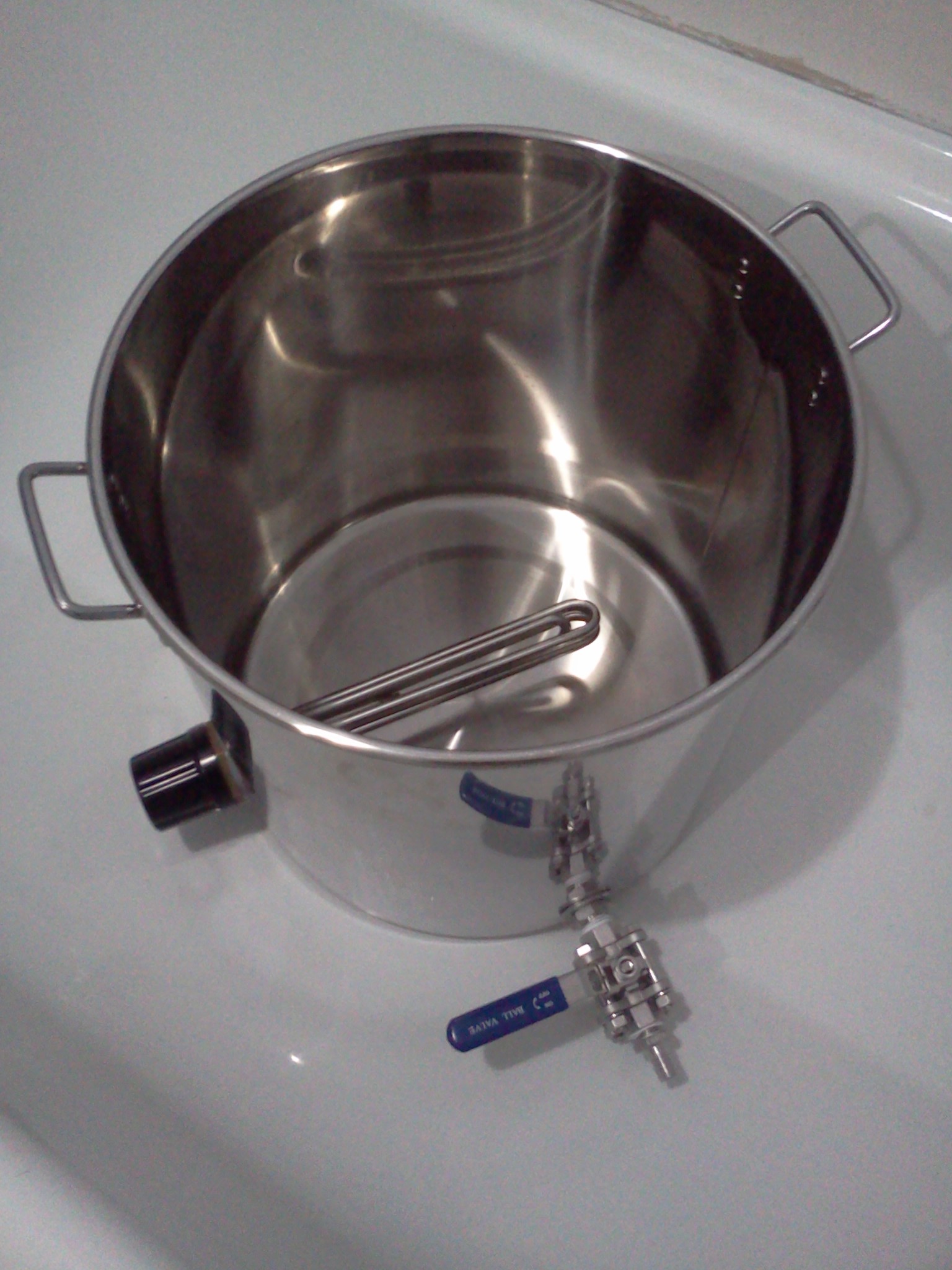
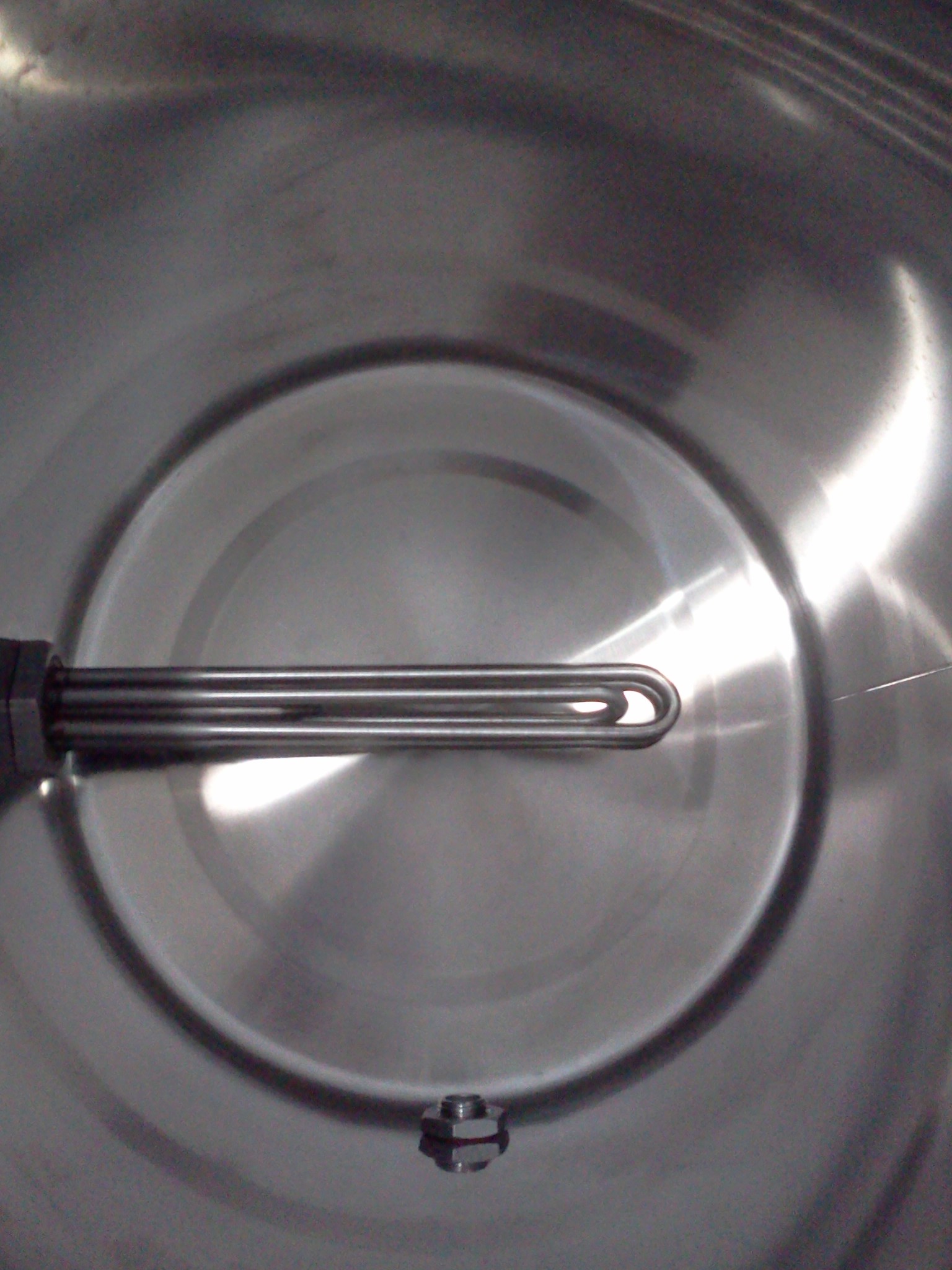
Wired up and insulated
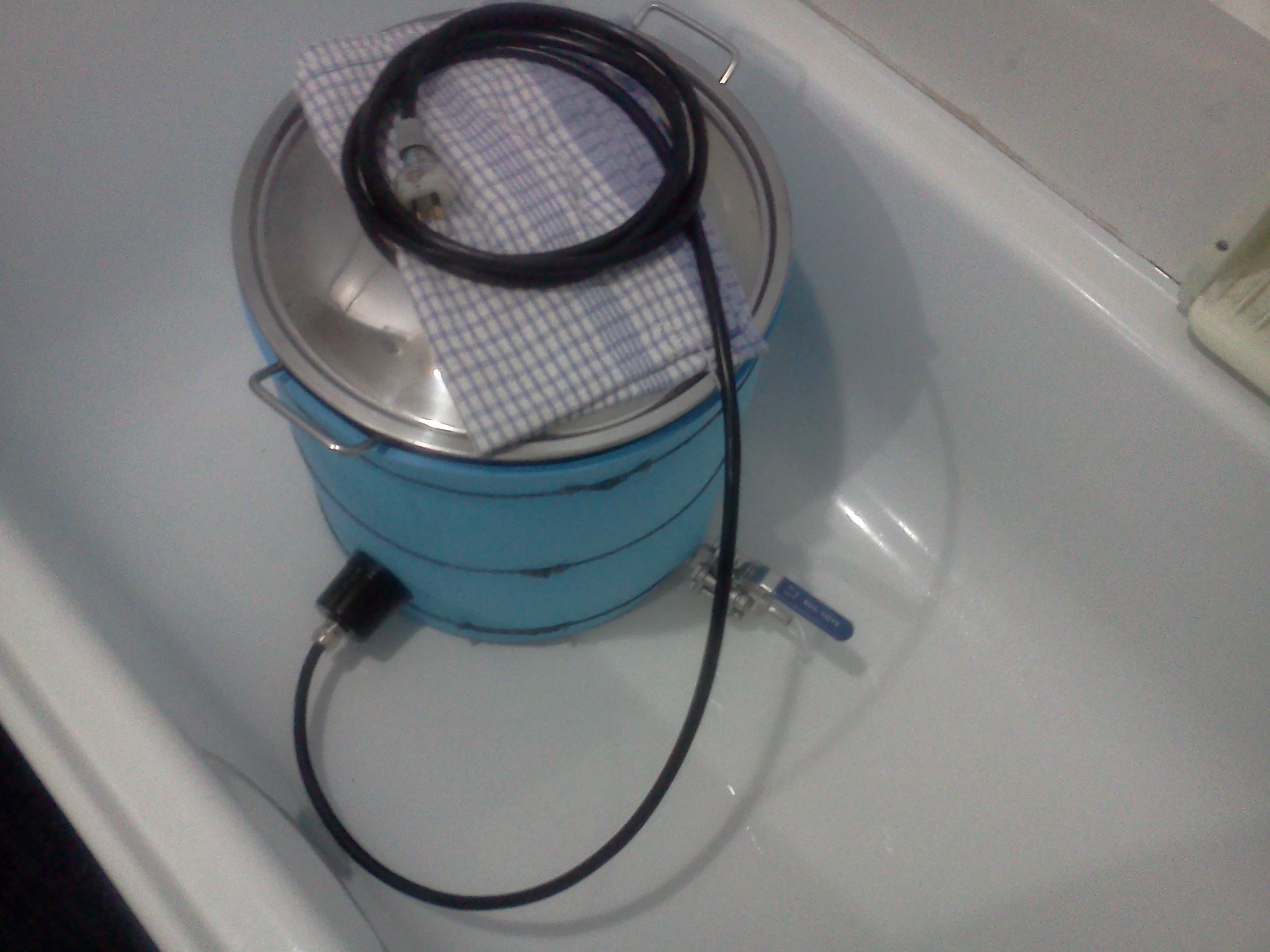
Gotta love that crappy insulation made from bedroll. It's far better than nothing; the outside of the insulation doesn't get more than lukewarm.
Strike water heating
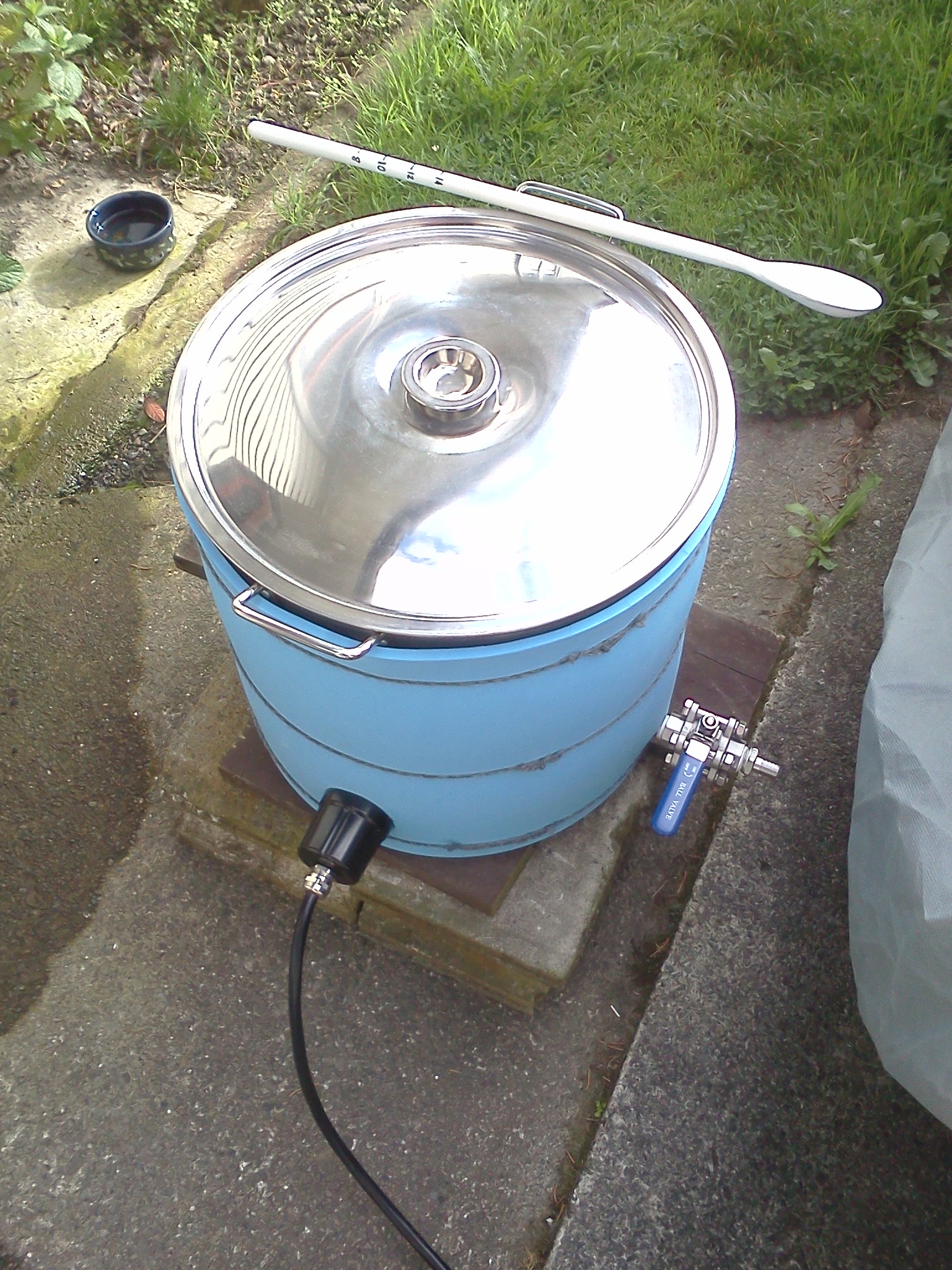
The strike water took about 30 minutes to heat to 75 °C from whatever tap temperature was on the day. Likely about 10 to 15 °C. In the meantime, sit back and have a coffee.
Mash complete
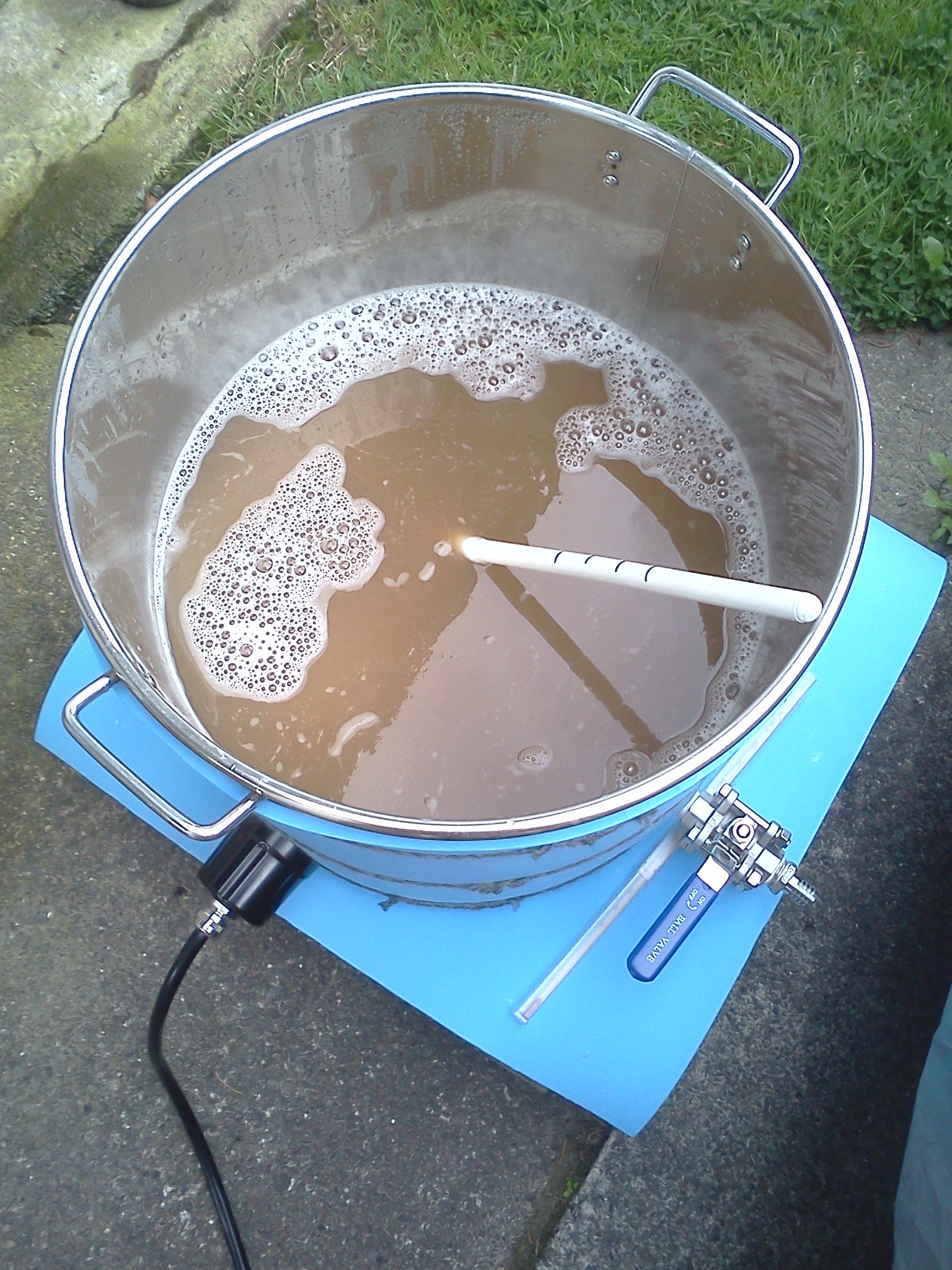
I didn't get any shots of mashing in, but here is a shot of after roughly 75 minutes of mashing, grain bad pulled out. It's a little murkier than I would have liked, but it's harder to filter wort through the grainbed with BIAB.
The boil
This was the real test for me; can the thing actually sustain a rolling boil? Gut instinct told me "yes, but it'll be a little iffy if it's cold out." This instinct turned out to be a little pessimistic. There was a fair bit of wind and I was able to maintain a rolling boil without the lid on.
